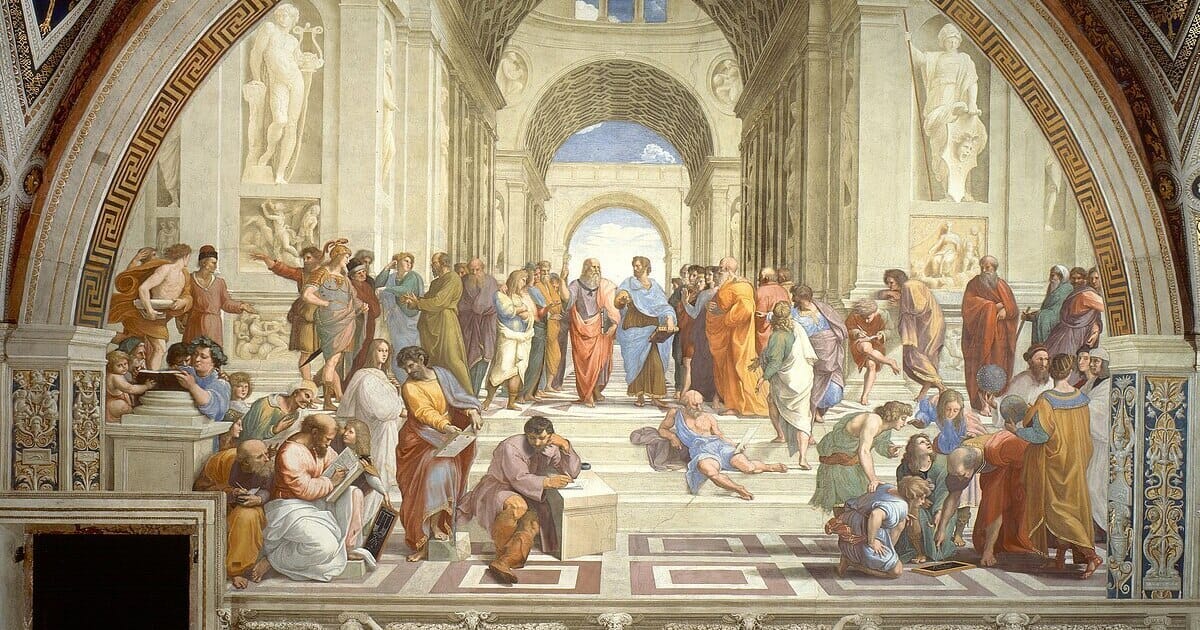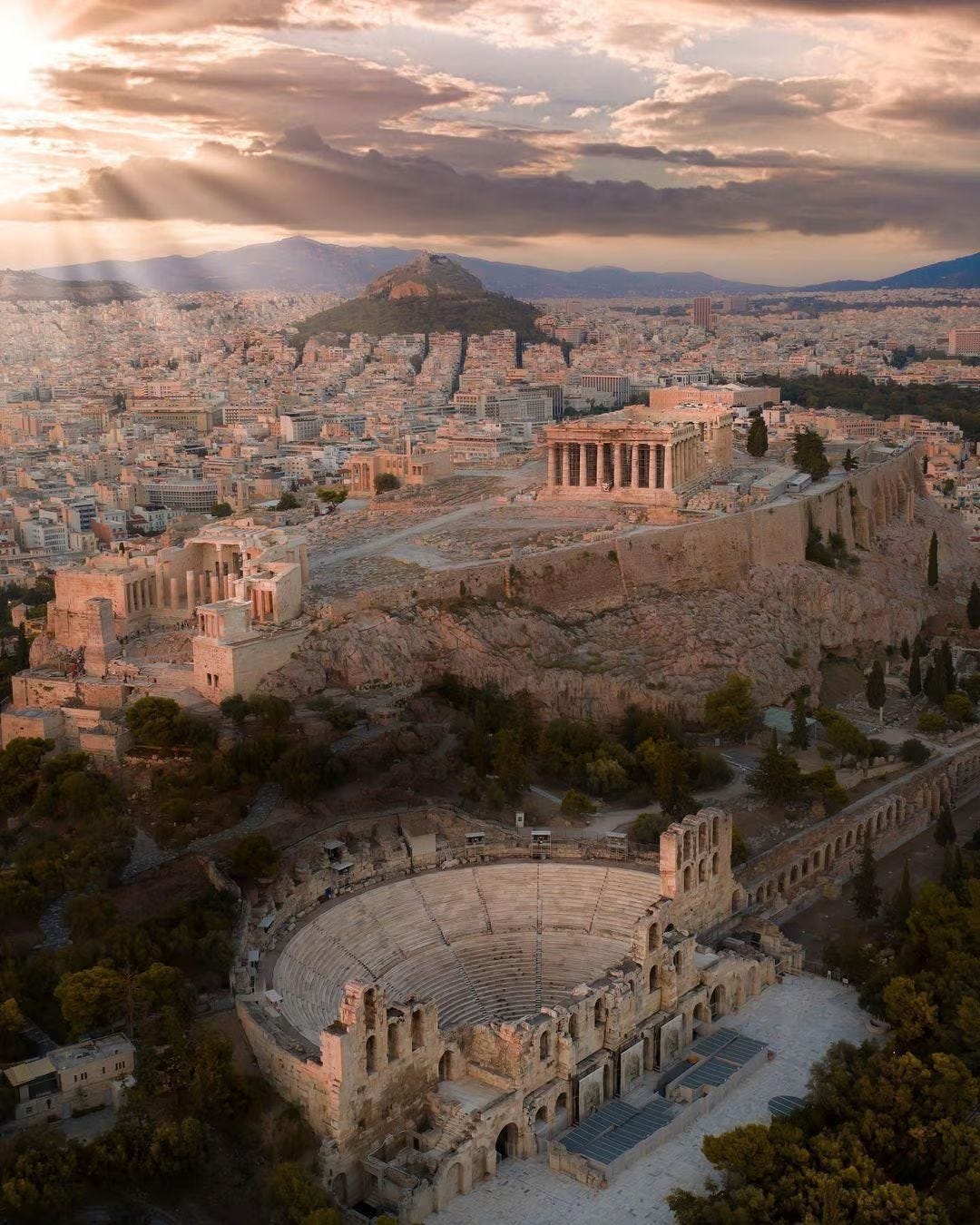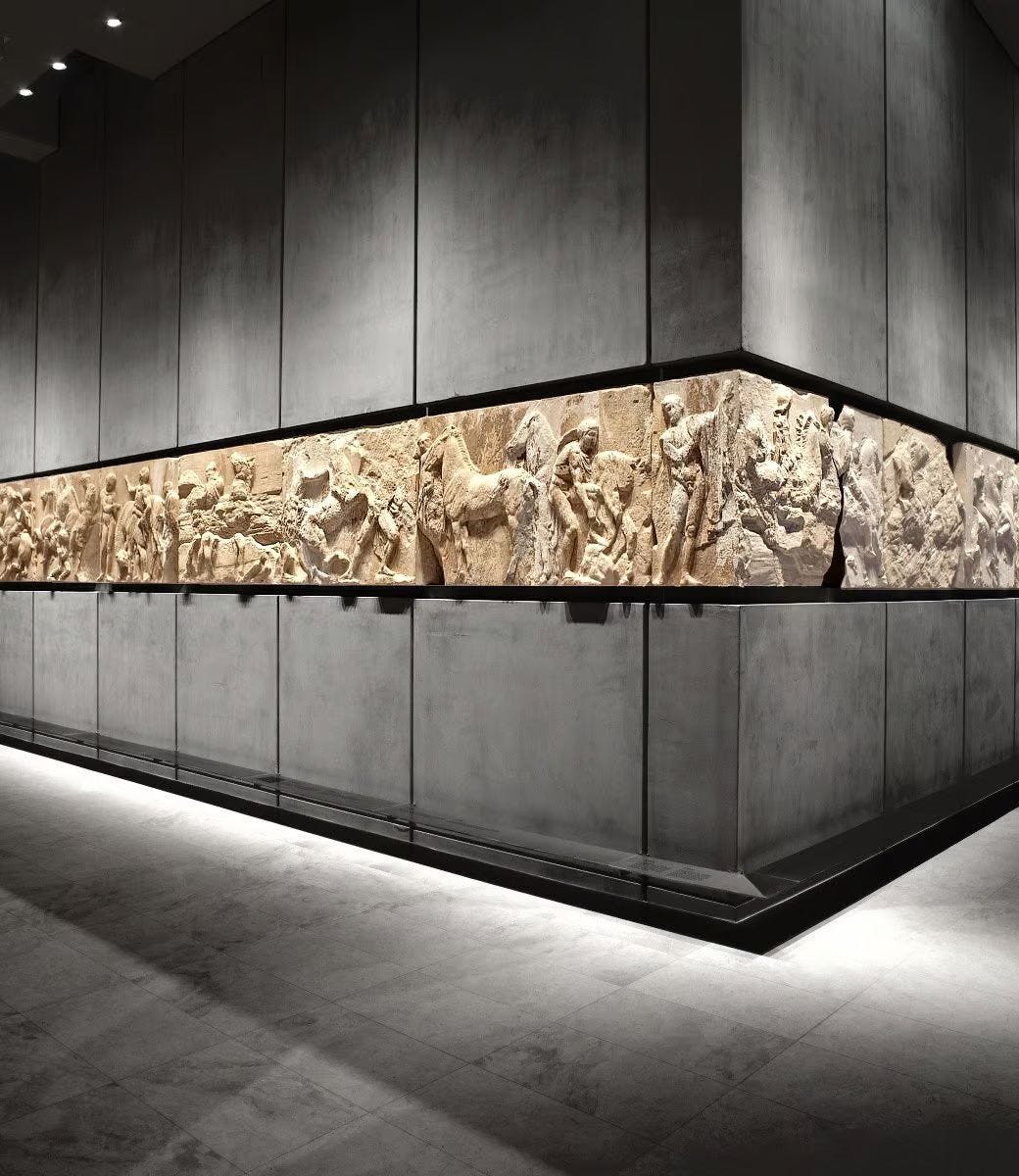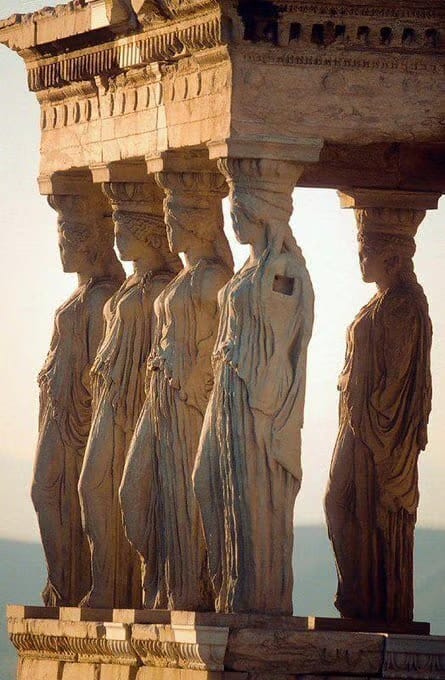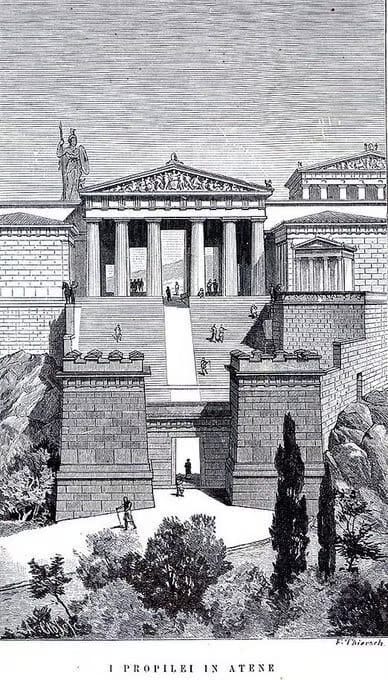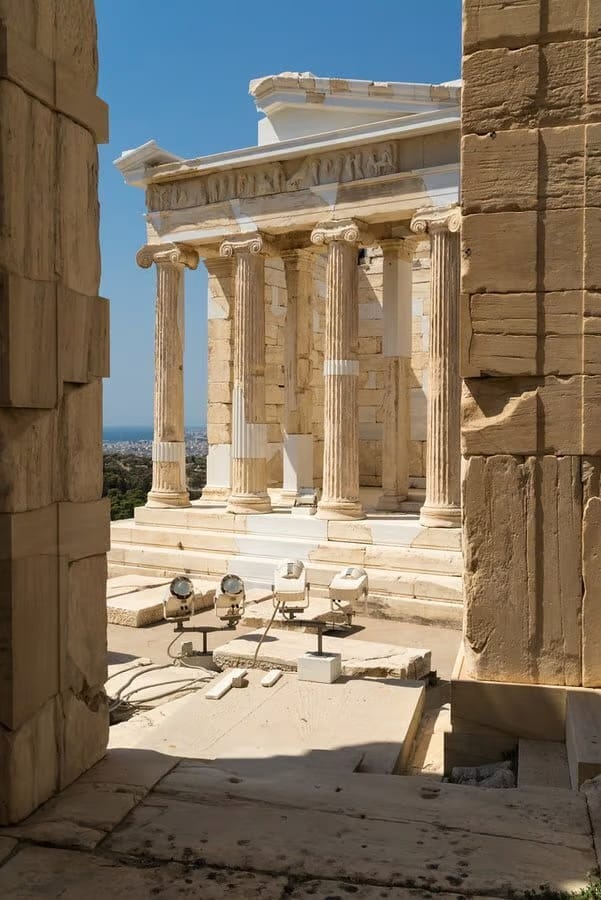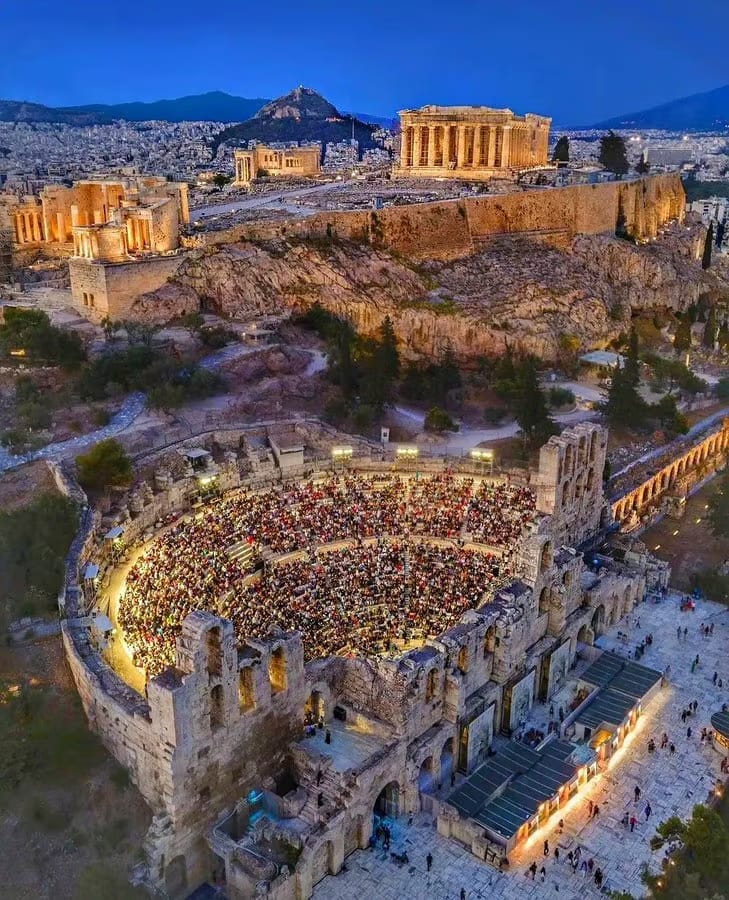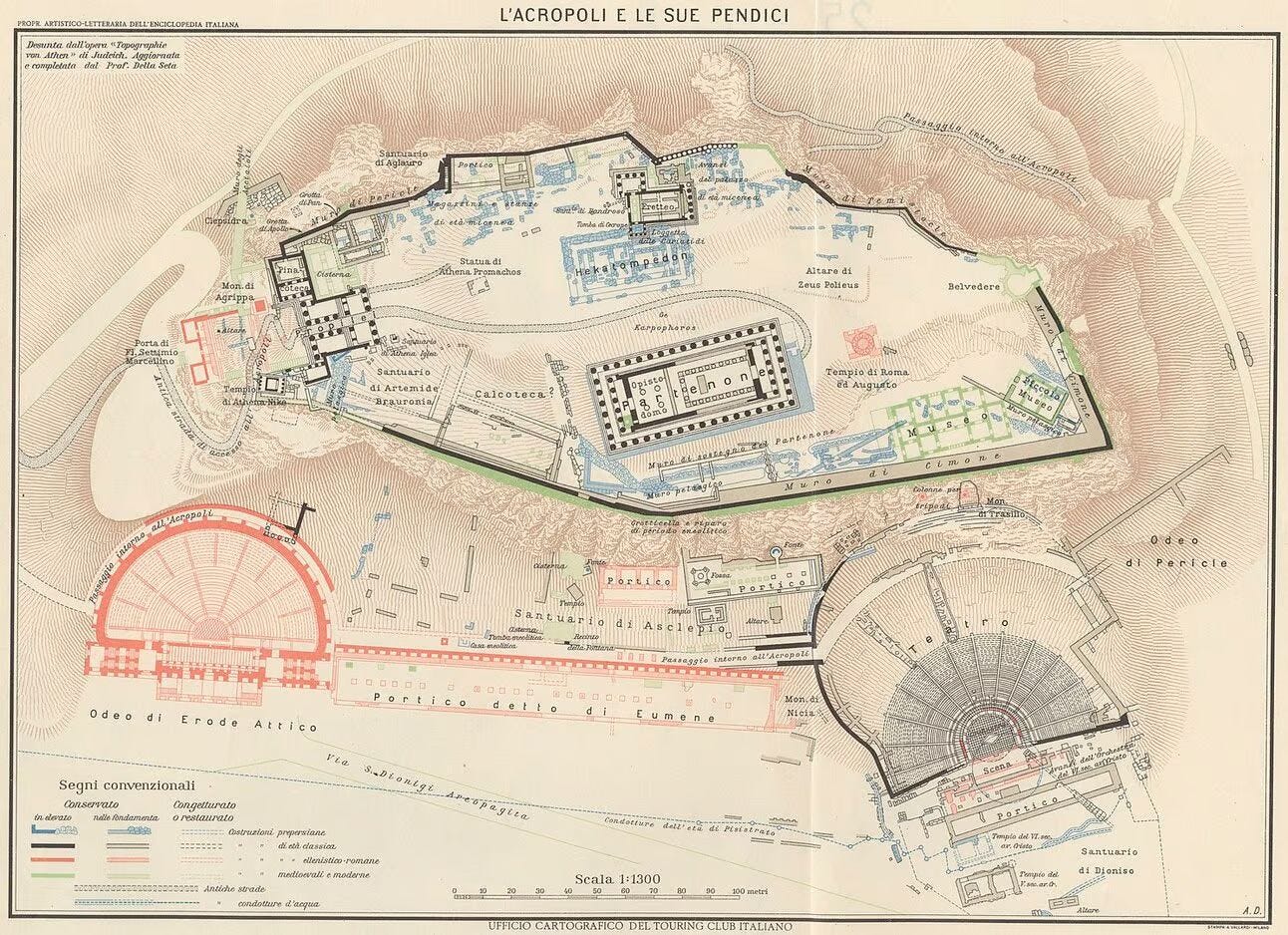The Acropolis of Athens: What lies in the shadows of the Parthenon?
What landmarks surround the Parthenon, weaving a story of ancient temples, sacred theaters, and timeless ruins that shaped the heart of Athens?
What lies in the shadows of the Parthenon?
Happy Monday!
The Acropolis of Athens represents one of the greatest human achievements. But it wasn’t an accident that the Acropolis should become the wonder we know it as today; it was the result of a deliberate and monumental rebuilding effort led by one man: Pericles
After the Persian sack of Athens in 480 BC, the Acropolis was left in ruins: temples burned, statues toppled, and the heart of Athenian religious life desecrated. From this catastrophe was born one of the most ambitious architectural undertakings in history: the reconstruction of the Acropolis during the Golden Age of Athens (460–430 BC).
Building works were financed by tributes of the Delian League (an alliance of Greek city-states originally designed to fight against Persian aggression).
Pericles thus channeled the resources of the Greek world into the service of making the Acropolis one beacon of Athenian magnificence. This ambitious venture drew together the finest architects, sculptors, and craftsmen of the time, including Iktinos, Kallikrates, Mnesikles, and Phidias.
No doubt the centerpiece of Pericles' vision was the Parthenon, a grand temple dedicated to Athena Parthenos, the patron goddess of the city. The one you see today was built between 447 and 432 BC, designed by the great architects Iktinos and Kallikrates, with sculptural decorations by Phidias. And it would replace the Older Parthenon (which had still been under construction when the Persians invaded in 3 decades earlier).
The Parthenon was revolutionary in its design. While being essentially a Doric temple, it incorporated Ionic features in the form of a continuous frieze. What many don’t know about the Parthenon is the slight curvature of its columns, conveying the feeling of perfection to the human eye when viewed from afar.
Inside stood the gigantic gold and ivory statue of Athena, at over 12 meters in height, carrying a shield and a figure of Nike, Victory, in her outstretched hand.
The frieze celebrated the Panathenaic procession (a religious festival uniting the city in honor of Athena every four years), rivaling the Olympic Games. The pediments illustrated her divine birth and the contest between Athena and Poseidon for the city's patronage.
But we’ve all heard of the Parthenon. What about the rest of the buildings in the Acropolis?
To the north of the Parthenon is the Erechtheion, constructed from 421-406 BC. The most emblematic feature is its Porch of the Caryatids. These six sculpted female figures stand draped in flowing garments, projecting both strength and grace, whilst bearing the weight of the structure.
Now the Caryatids you see today aren’t real: they’re plaster replicas of the originals. One statue was taken by Lord Elgin, in 1802, to be displayed in the British Museum. The remaining five were removed, in 1978, and are housed in the Acropolis Museum.
Then, we have the Propylaea, the main entrance of the Acropolis (built from 437 to 432 BC). Unlike the balance of the Parthenon, the structure of the Propylaea is asymmetrical, as it follows the steep inclination of the Acropolis.
It was a central hall with wings on either side to give the effect of both massiveness and intimacy. The western wing had a room that was believed to have been used for paintings and thus is considered one of the very first art galleries in ancient history.
The Propylaea was more than an entryway; it was meant to inspire awe in every visitor travelling up to the Acropolis.
Standing on a bastion to the right of the Propylaea, the Temple of Athena Nike was completed around 420 BC, designed by Kallikrates. This small Ionic temple celebrated Athena as the bringer of victory, particularly over the Persians.
Its frieze was decorated with scenes of combat and the military might of Athens. The balustrade of the temple was decorated with winged Nikes in dynamic, natural poses; the most famous of these is the Nike Adjusting Her Sandal, the tender moment of human-like weakness within divine greatness.
The Odeon of Herodes Atticus was built centuries later, by Herodeon in 161 AD, in memory of his wife, Regilla. With a seating capacity of around 5,000, it was constructed primarily from local marble and featured a grand stage. But unlike earlier Greek theaters, the Odeon had a wooden roof, something quite revolutionary for its time, designed to enhance acoustics.
But these weren’t the only wonders that blessed the grounds of the Acropolis.
To the eastern side of the Acropolis there was the Chalkotheke, a repository for bronze offerings. As well as the Brauroneion, dedicated to Artemis Brauronia.
The slopes of the Acropolis were as important as its summit. The Theatre of Dionysus, carved into the southern slope, was the birthplace of Greek tragedy and comedy. Here dramatists such as Sophocles and Euripides staged plays, setting the direction for the future of Classical literature.
Here is a detailed map of the Acropolis of Athens with all the smaller structures and details, worth looking into:
Through the Acropolis, Athens made an announcement of its ideals: democracy, reason, and the pursuit of excellence. Destroyed, its legacy has lasted through millennia, inspiring awe and reverence across time.
The Acropolis of Athens is not merely a piece of history, but a monument that will forever stand for humanity's most lofty aspirations and creativity.
Thank You once again to Culture Explorer for inviting me back onto the newsletter. If you haven’t already, you can’t miss out on subscribing to the premium editions to dive deeper into more fascinating topics here!
The most beautiful winter towns and cities in the world - a thread 🧵
1. Prague, Czech Republic
— World Scholar (@WorldScholar_)
We hope you enjoyed this insightful article by our guest author, World Scholar, and that it leaves you well-prepared for an unforgettable visit to the Acropolis in Athens.
And for those who are building a brand on social media platforms, Culture Explorer will be teaching a course on Growth on X and overcoming the algorithm in Art of Purpose’s Create Publish Profit month long mentorship program which starts on January 9th. Check out the link below for more details.
Create, Publish, Profit: 10X Your X in 30 Days (January 9th)
Get Direct Access to a Mentorship That Teaches You Everything You Ever Wanted to Know About Building a Business on X... Introducing: Create, Publish, Profit: 10X Your X in 30 DaysCreate, Publish, Profit is a cohort-style mentorship that will 10x the results you are currently getting with 1/10th the time, energy, and effort of figuring it out on your own. Imagine where you would be if you could be mentored by the biggest accounts and then implement their strategies, secrets, and methods to build your own X money-printing machine...
“You must be the change you wish to see in the world.”
Mahatma Gandhi
"The greater danger for most of us lies not in setting our aim too high and falling short, but in setting our aim too low and achieving our mark."
- MichelangeloThese sculptures inspire us to reach for heights we might have deemed impossible. 🧵
Art - Song of Oranges by Gao Jingbo
Masterclass 24/7 - A Mastermind Community for Social Media Entrepreneurs
IMPORTANT: Yearly and Bi-Yearly subs get 1-1 Digital Blueprint calls and a bonus! What if someone handed you the keys to a mastermind community where the biggest accounts directly teach you how to grow your social media accounts and make more money online? Imagine what you could accomplish... Welcome to Masterclass 24/7.
Makes a great Present for Wedding, Bridal Shower, Engagement, Anniversary, Housewarming, Gift Idea for Couples Bride, Parent, Family.



